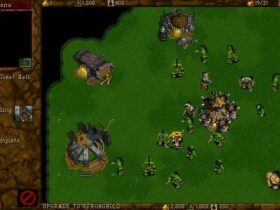Scientists have discovered a new animal species whose existence dates back millions of years ago. These dinosaurs were alive during Earth’s ancient times, and they had long tails and large bodies with 500 or more than that sharp teeth.
The Research scientist discovered from the evidence of radiocarbon fossils these giant species are indeed millions of years old.
Humans always want to know what life was like in those days, but this discovery brings up another question: How did these fascinating creatures survive on our planet?
Scientists have been studying the habits and lifestyles of humans and animals for quite some time. Movies can show us a glimpse into what life was like back then, but they are not always accurate or complete enough when it comes to detailing every last detail about these ancient creatures.
A dinosaur with 500+ teeth might sound crazy at first glance! after all; no way could ever happen again, right? But if you think about how much dental care would require from your average human being, well, let’s say this species had far more enamel than any other animal on Earth.
Before them Sometimes, it can be hard to believe that these giant creatures from the past ever existed at all. But by reading this article, you will learn about some rare facts on how dinosaurs had 500 teeth and what makes them so different than other animals today?
What is the name of the dinosaur ? What dinosaur has 500 teeth ?
The fossils of dinosaurs were discovered in 1976. This fossil was found in the Elrhaz Formation in Gadoufaoua, in a rich fossil vertebrate. Dinosaur with 500 teeth was named Nigersaurus taqueti later in 1999, which means niger reptile or niger’s lizard.
Nigerasaurus has a 9metre and 30-foot long body, whereas the animal was herbivores and used to eat plants only. The jaws may have borne a keratinous sheath, and it lived in a Cretaceous period, which was about 115 to 105 million old.
Rare features of Nigersaurus
The Nigersaurus was a specialized animal with four large side fenestrae in its skull and thin bones. This led to a broad muzzle filled with more than 500 teeth, which were replaced every 14 days due to their ancestors’ diets’ tough nature.
Nigersaurus is often thought of as a generalized dinosaur, but it has rare features. For example, its jaws were wider than the skull and its teeth extended laterally across the front of the mouth rather than sticking out like most animals do today. This made feeding easier because food could easily fall into a wide gap without getting trapped between two sharp edges.
When measured across all measurements, the upper jaw seemed 20–30% more significant than the lower half; this could mean two things: either these creatures specialization bred traits specifically for eating softer foods such as fruits & vegetables, which would make sense since they lived on land.
The Nigersaurus was a creature from ancient times. It had an elongated body with 60 columns on each side of its upper jaw and 68 lower teeth for biting bugs or grinding food into more manageable sizes (like plant-based proteins.
They had more than 500 individual teeth; with all these mouthparts accounted for – there were nine replacement sets.
No way could Nigersaurus be a unique predatory dinosaur with an unusual tooth structure. It had dental batteries, something that has never been seen before in Sauropod families and is another defining characteristic for this species of animal.
































